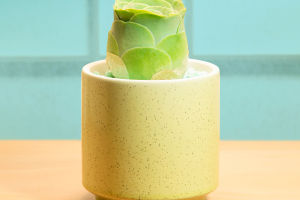Exterior Wall
When a house is finally built, attention naturally shifts to both its interior and exterior aesthetics.
The decoration of exterior walls is a critical aspect that can significantly enhance the overall appeal of the home.
This guide explores three primary methods of exterior wall decoration—tiling, painting, and plant decoration—offering insights into color selection and matching techniques to achieve the desired visual impact.
1. Tiling
Tiling is a popular choice for exterior wall decoration due to its durability and excellent waterproof capabilities. Various types of tiles are available, offering flexibility in design. However, tiling can be more costly and less convenient to install compared to other methods.
When selecting tile colors, it's crucial to consider harmonious matching and smooth transitions between colors to create a cohesive and attractive look.
2. Painting Wall Paint
Painting is a simpler and often more cost-effective method of exterior decoration. Given the large surface area of exterior walls, it's advisable to avoid overly bright colors, which can be overwhelming and may not age well.
Instead, choose colors that are resistant to dirt and fading to maintain the wall's appearance over time. A well-chosen paint color can enhance the home's aesthetics without drawing too much attention to imperfections.
3. Plant Decoration
Installing plants around the house can also serve as an effective decorative strategy. Planting greenery to cover exterior walls not only improves the environmental ambiance but also introduces a natural, organic element to the home's appearance. This method enhances the house's visual appeal while promoting a connection with nature.
Choosing the Right Colors for Exterior Walls
Selecting the appropriate color scheme for exterior walls is essential for achieving a visually pleasing effect. Here are some methods and considerations for choosing colors:
1. Solid Color System
Opting for a single color can create a simple and elegant look. Bright colors can make the house appear light and airy, but they may require more maintenance due to their propensity to show dirt. For a more practical choice, consider colors that balance brightness and ease of maintenance.
2. Neighboring Colors
This method involves selecting a main color and complementing it with one or two similar hues. This approach helps in creating a seamless transition across large wall areas, avoiding abrupt color shifts, and promoting a harmonious appearance.
3. A Variety of Colors
Using three or more colors can add depth and interest to the exterior walls. Typically, a dominant color is chosen to cover the majority of the area, with additional colors providing contrast and highlights. The contrast between colors should be subtle to avoid a jarring visual effect.
Notes on Exterior Wall Color Matching
1. Avoid Deep Colors: Choosing too dark colors can make the house appear gloomy and oppressive. Lighter colors tend to create a more inviting and cheerful atmosphere.
2. Moderate Color Contrast: Ensure that the transition between colors is smooth to avoid visual discomfort. Abrupt color jumps can be unsettling.
3. Upper Light, Lower Dark Principle: Applying lighter colors on the upper part and darker shades on the lower part of the wall can prevent a top-heavy appearance and create visual balance.
4. Harmony with The Surroundings: The exterior wall colors should complement the surrounding environment to help the house blend in naturally.


